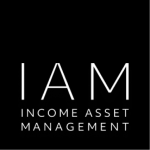Research Hub
Recent Credit Opinions
Most Popular Articles
Recent Thought Pieces
Most Popular Articles
October 1 2025 | 9 min

RBA rates on hold – important not to forget about floaters within portfolios
Read ArticleRecent Trade Ideas
Most Popular Articles
October 13 2025 | 6 min
Lendlease Innovative Hybrid – A Fresh Trade for the Aussie Credit Market
Read ArticleSeptember 1 2025 | 8 min
French Political Situation – We have seen this playbook before back in June 2024
Read ArticleBond Pricing Calculator
Use our bond calculator to derive key metrics for a chosen bond, including price and yield, to assist you when selecting bonds for a portfolio.
Recent New Issues
Popular New Issues
Recent Education
Recent Education Articles
July 1 2024 | 3 min

Interest Rate Swap Curve is a Key Factor in Pricing Corporate Bond Curves
Read ArticleRecent Media
Popular Media Releases
September 8 2025 | 2 min

Income Asset Management surpasses $500m in syndicated loans and seeds MDA
Read ArticleLeverage insights from Australia’s leading asset managers
Watch our series of interviews with some of Australia’s most successful fixed income allocators exploring the evolution of their careers, current markets and asset allocation, and where to look for opportunities in the future.